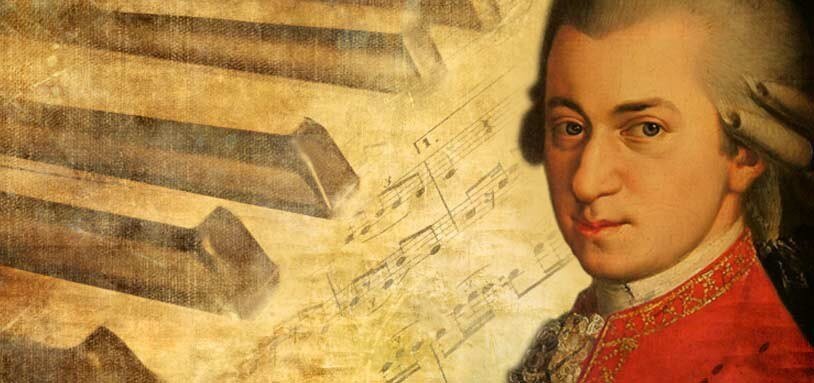Wolfgang Amadeus Mozart (1756-1791), a prolific and influential composer of the Classical era, is celebrated for his exceptional ability to blend beauty, complexity, and clarity in his music. His oeuvre includes a vast array of compositions, from symphonies and operas to chamber music and solo pieces. Among his extensive catalog, certain works stand out for their brilliance, innovation, and enduring popularity. Here are ten of Mozart’s best and most beloved songs, each illustrating his genius and timeless appeal.
1. “Eine kleine Nachtmusik” (Serenade No. 13 in G major, K. 525)
Often translated as “A Little Night Music,” this serenade is one of Mozart’s most recognizable pieces. Composed in 1787, it consists of four movements, with the Allegro first movement being particularly famous. The piece showcases Mozart’s ability to write music that is both elegant and lively, making it a staple in the classical repertoire.
Key Features:
- Joyous and vibrant melody.
- Clear and balanced structure.
- Widely performed and recorded, making it accessible to audiences worldwide.
Listen to: The first movement (Allegro) for its bright, memorable theme.
2. “Requiem in D minor, K. 626”
Mozart’s Requiem is shrouded in mystery, as it was his final composition and left incomplete at his death in 1791. Completed by his student Franz Xaver Süssmayr, the Requiem combines profound emotional depth with Mozart’s trademark musical clarity. The “Lacrimosa” movement, in particular, is known for its moving, haunting beauty.
Key Features:
- Deep emotional resonance.
- Rich choral and orchestral textures.
- Historical significance as Mozart’s last work.
Listen to: The “Lacrimosa” for its emotional intensity and mournful beauty.
3. “The Magic Flute” (Die Zauberflöte, K. 620)
This opera, composed in 1791, blends a fairy tale plot with Enlightenment ideals. Its music ranges from lighthearted arias to profound ensemble pieces. The “Queen of the Night” aria is especially famous for its demanding vocal range and dramatic flair.
Key Features:
- Mix of folk-like melodies and sophisticated arias.
- Philosophical and symbolic themes.
- Popular arias like “Der Hölle Rache” (“Queen of the Night”).
Listen to: “Der Hölle Rache” for its thrilling, high-energy vocal fireworks.
4. “Symphony No. 40 in G minor, K. 550”
One of Mozart’s most well-known symphonies, composed in 1788, this work is distinguished by its emotional intensity and minor key. The first movement, Molto allegro, is particularly celebrated for its urgent, driving theme and intricate development.
Key Features:
- Dark, dramatic tonality.
- Complex thematic development.
- Prominent use of minor key, unusual for symphonies of the time.
Listen to: The first movement for its compelling urgency and dynamic contrasts.
5. “Piano Sonata No. 11 in A major, K. 331”
This piano sonata, composed around 1783, is best known for its final movement, the “Rondo alla Turca” (Turkish March). The lively, percussive character of this movement showcases Mozart’s playful side and his flair for integrating different cultural influences into his music.
Key Features:
- Memorable, catchy “Rondo alla Turca” finale.
- Contrast between elegant themes and lively rhythms.
- A favorite in piano repertoire.
Listen to: The “Rondo alla Turca” for its energetic, playful character.
6. “Clarinet Concerto in A major, K. 622”
Composed in 1791, this concerto is one of Mozart’s final instrumental works and is celebrated for its lyrical beauty. The Adagio second movement, in particular, is renowned for its serene, expressive melody.
Key Features:
- Lush, warm clarinet writing.
- Beautifully lyrical slow movement.
- Significant in the clarinet repertoire.
Listen to: The Adagio for its sublime, flowing melody.
7. “Symphony No. 41 in C major, K. 551” (Jupiter Symphony)
Mozart’s final symphony, composed in 1788, is known for its grand scale and intricate counterpoint. The nickname “Jupiter” reflects its majestic, powerful character. The final movement, Molto allegro, is a tour de force of fugal writing and thematic complexity.
Key Features:
- Grand, majestic themes.
- Complex contrapuntal textures.
- Celebrated final movement with multiple thematic layers.
Listen to: The final movement for its brilliant, fugal writing and exhilarating conclusion.
8. “Don Giovanni” (K. 527)
This opera, premiered in 1787, combines elements of comedy, melodrama, and the supernatural. Its overture and arias, such as “Là ci darem la mano” and “Catalogue Aria,” are celebrated for their dramatic expressiveness and musical invention.
Key Features:
- Blends comedy and drama seamlessly.
- Rich characterizations through music.
- Memorable arias and ensemble pieces.
Listen to: The overture for its dramatic and thematic foreshadowing.
9. “Serenade No. 10 for winds in B-flat major, K. 361” (Gran Partita)
This serenade, composed around 1781, is notable for its rich, diverse instrumentation and expansive structure. The Adagio third movement, famously featured in the film “Amadeus,” is celebrated for its exquisite, delicate beauty.
Key Features:
- Rich orchestration for wind ensemble.
- Expansive, varied movements.
- Sublime Adagio movement.
Listen to: The Adagio for its delicate, enchanting melody.
10. “Piano Concerto No. 21 in C major, K. 467”
Composed in 1785, this piano concerto is one of Mozart’s most popular. The Andante second movement, often referred to as “Elvira Madigan” after its use in the 1967 film, is known for its serene, lyrical beauty.
Key Features:
- Beautifully lyrical piano writing.
- Memorable, flowing Andante movement.
- Balances virtuosity with expressive depth.
Listen to: The Andante for its graceful, soothing melody.
Mozart’s music remains a cornerstone of the classical repertoire, celebrated for its elegance, emotional depth, and technical mastery. These ten pieces, while only a glimpse into his prolific output, capture the essence of his genius and continue to enchant audiences worldwide.

Comments are closed